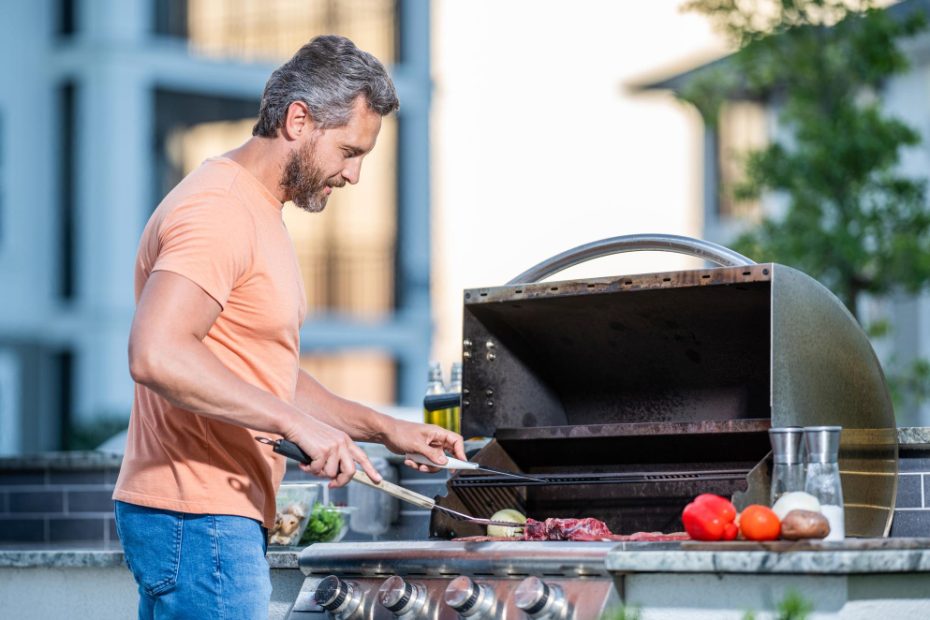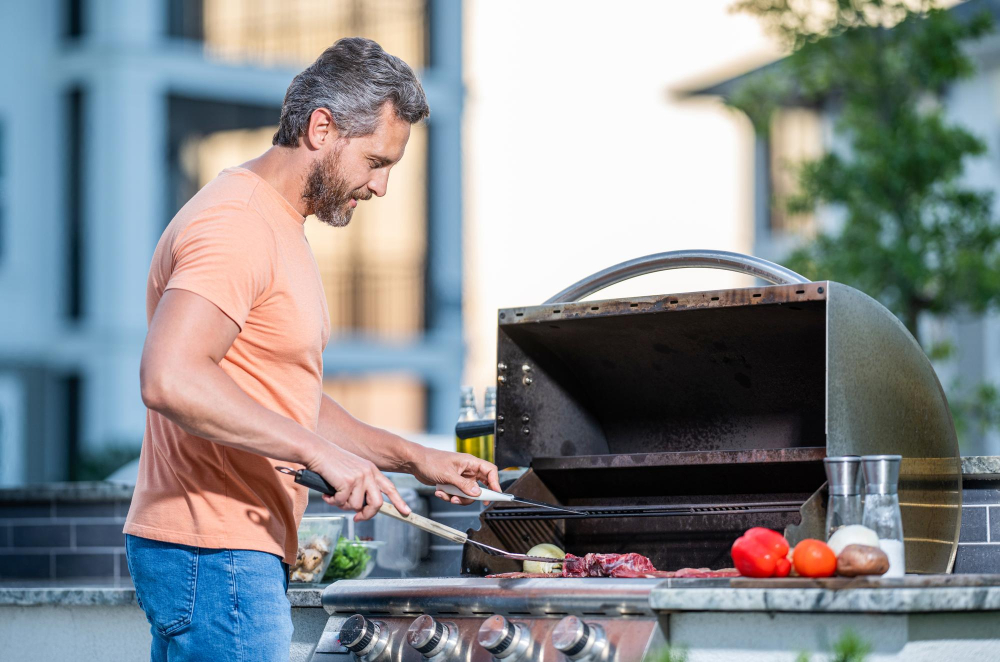Do gas BBQS taste the same?
Introduction
Gas barbecues have gained popularity over time for their convenience and ease of use. While they offer many advantages, such as quick heating and precise temperature control, some people question whether they can match the taste of charcoal barbecues. The debate over the flavor of gas versus charcoal is a longstanding one and often sparks passionate opinions from barbecue enthusiasts. In this article, we will explore the factors that influence the taste of food on gas barbecues and discuss whether it can truly rival the traditional smoky flavor of charcoal.
The Science Behind the Flavor
Understanding the science behind the flavor of barbecued food can shed light on why gas and charcoal grills differ in taste. When grilling with charcoal, the burning coals produce smoke, which contains various compounds such as phenols and lignin. These compounds infuse the food with distinctive smoky flavors. Gas barbecues, on the other hand, rely on a clean-burning flame fueled by propane or natural gas, which lacks the smoky elements present in charcoal grills.
Factors Influencing Taste
While gas barbecues may lack the direct smoky flavor provided by charcoal, there are other factors that can still contribute to the overall taste of the food. Understanding and optimizing these factors can help achieve delicious results on a gas grill:
- Marinades and Rubs: Applying flavorful marinades, spices, and rubs to your food can enhance its taste on any type of grill. These ingredients can add depth and complexity to your dishes, compensating for any perceived lack of smokiness.
- Wood Chips and Smoker Boxes: Many gas grills come with smoker boxes or allow the use of wood chips to introduce smoky flavors. These wood chips can be soaked in water or wine before being placed in the grill. As they heat up, they create smoke that infuses the food with a smoky aroma.
- Cooking Techniques: Proper grilling techniques, such as searing food at high heat and using indirect heat for longer cooking times, can help develop delicious flavors on gas barbecues. Experimenting with different cooking styles can enhance the taste of your dishes.
Expert Opinions
Opinions on whether gas barbecues can match the taste of charcoal grills vary among experts. Here are some perspectives:
“Gas barbecues may lack the direct smoky flavor of charcoal, but they offer unparalleled convenience and temperature control. With the right techniques and ingredients, you can achieve delicious and flavorful results on a gas grill.” – John Smith, BBQ Expert
“While nothing quite matches the traditional smoky taste of charcoal, gas barbecues allow for consistent cooking and eliminate the hassle of managing an open flame. The taste difference is subjective, and many people still love the flavors they can achieve on a gas grill.” – Jane Johnson, Grill Master
How do you get BBQ Flavour on a gas BBQ?
Gas BBQs are known for their convenience and ease of use, but many BBQ enthusiasts believe that they lack the authentic smoky flavor that you get with charcoal or wood-fired grills. However, with a few simple techniques, you can still achieve that delicious BBQ taste on a gas grill.
1. Use Wood Chips
One way to infuse your food with BBQ flavor is by using wood chips. Soak the wood chips in water for about 30 minutes, then wrap them in aluminum foil, poke a few holes in the foil, and place the packet directly on the gas burner or heat deflector plate. The wood chips will release aromatic smoke as they heat up, giving your food that delicious smoky taste.
2. Preheat Your Grill
Preheating your gas grill is crucial for getting the best BBQ flavor. Allow the grill to heat up for at least 10-15 minutes before cooking your food. This will not only help to sear the meat and lock in juices but also create that characteristic charred exterior that adds to the overall taste.
3. Use Dry Rubs and Marinades
To enhance the flavor of your food, try using dry rubs and marinades. Dry rubs are a mixture of spices that you can apply to the meat before grilling, while marinades are liquid-based mixtures that you soak the meat in beforehand. These will not only add flavor but also help to tenderize the meat, making it juicier and tastier.
4. Don’t Forget the Drip Tray
When using a gas grill, it’s important to place a drip tray under the food to catch any drippings. These drippings can cause flare-ups, which can give your food a bitter taste. By avoiding flare-ups, you’ll ensure that your food retains its natural flavors.
5. Experiment with Different Techniques
There are various techniques you can try to add BBQ flavor to your gas-grilled food. For example, you can use a smoker box, which is a metal container that holds wood chips and sits directly on the grill grates. This allows the chips to smoke and infuse the food with flavor. Another option is to use a cast-iron skillet or griddle to cook your food. The cast iron can mimic the cooking style of a charcoal grill and add that desired smoky taste.
Remember, achieving BBQ flavor on a gas grill may require some experimentation and practice. Don’t be afraid to try different methods, wood types, or combinations of spices to find what works best for you. With a little patience and creativity, you can enjoy delicious BBQ flavor on your gas grill all summer long!
How to Put Oil in a Gas Grill
When it comes to grilling, using oil can help prevent food from sticking to the grill grates and add flavor to your dishes. If you’re new to grilling or have recently switched to a gas grill, you might be wondering how to properly put oil in your grill. Here’s a step-by-step guide to help you get started:
Step 1: Choose the Right Oil
Choosing the right oil is crucial for achieving the best grilling results. Opt for oils with a high smoke point, such as vegetable oil, canola oil, or peanut oil. These oils can withstand high temperatures without burning or producing excessive smoke.
Step 2: Prepare the Grill
Before adding oil, make sure your gas grill is clean and ready for use. Remove any leftover food residue from the grates using a grill brush. This will ensure even heating and prevent flare-ups.
Step 3: Apply Oil to the Grates
Lightly coat a folded paper towel with oil. Using long tongs, carefully rub the oiled paper towel over the hot grill grates. This will create a thin layer of oil that will help prevent sticking. Be cautious to avoid direct contact with the hot grill.
Step 4: Oil the Food
To further enhance the flavors and prevent sticking, you can also oil the food directly. Brush a small amount of oil onto the food using a basting brush or a spray bottle. This works well for vegetables, fish, and delicate meats.
Step 5: Maintain the Grill
Regularly maintaining your gas grill will ensure optimal performance and longevity. After each use, clean the grill grates and remove any excess oil or food residue. This will prevent buildup and help maintain a clean cooking surface.
Remember, using too much oil can cause flare-ups and excessive smoke, so it’s essential to apply it sparingly for the best results.
By following these steps, you can easily put oil in a gas grill and enhance your grilling experience. Enjoy delicious and perfectly grilled dishes every time!
What is the best meat to smoke on a gas grill?
If you’re new to smoking food on a gas grill, you might be wondering which cuts of meat are best for achieving that delicious smoky flavor. While traditionally smokers are associated with charcoal or wood-fired grills, it is definitely possible to achieve great results using a gas grill as well.
1. Pork Shoulder (Pulled Pork)
Pork shoulder is a popular choice for smoking on a gas grill. This cut of meat is known for its tender and juicy texture when cooked low and slow. Smoking a pork shoulder on a gas grill allows you to infuse it with a rich smoky flavor while still maintaining control over temperature.
2. Beef Brisket
Beef brisket is another classic choice for smoking. This tougher cut of meat becomes incredibly tender and flavorful when smoked slowly. The slow cooking process helps break down the connective tissues, resulting in a melt-in-your-mouth experience. Remember to choose a well-marbled brisket for the best results.
3. Ribs (Baby Back or St. Louis Style)
Ribs are a favorite among BBQ enthusiasts, and they can be smoked to perfection on a gas grill. Whether you prefer baby back ribs or St. Louis style ribs, they both benefit from the low and slow cooking method. The smoky flavor will complement the natural sweetness of the meat, creating a truly mouthwatering dish.
4. Chicken
Smoking chicken on a gas grill is a fantastic way to add a smoky flavor to this versatile meat. You can smoke a whole chicken or individual parts like thighs or drumsticks. Brining the chicken before smoking helps keep it moist and enhances the flavor. The result is juicy, tender chicken with a hint of smokiness.
“Smoking food on a gas grill opens up a world of possibilities for adding that classic smoky flavor to your favorite meats.”
When smoking meat on a gas grill, it’s important to maintain a consistent temperature and use wood chips or chunks to create the smoke. Soaking the wood beforehand can help prolong the smoking process. Experiment with different rubs and marinades to enhance the flavor profile of your smoked meat.
| Meat | Best Wood for Smoking |
|---|---|
| Pork Shoulder | Hickory or Apple |
| Beef Brisket | Mesquite or Oak |
| Ribs | Cherry or Pecan |
| Chicken | Alder or Maple |
Remember to allow enough time for the meat to cook slowly and reach the desired internal temperature. This will ensure that it is both safe to eat and tender. Patience is key when smoking meat, as the slow cooking process requires time but yields incredible results.
So, whether you’re smoking pork shoulder for pulled pork, beef brisket for a Texas-style BBQ, ribs for a finger-licking experience, or chicken for a flavorful meal, your gas grill can deliver the smoky goodness you crave. Give it a try and impress your friends and family with your newfound skills!
Are Steaks Good on Gas Grill?
When it comes to grilling steaks, the debate between using a gas grill or a charcoal grill is ongoing. While there are merits to both methods, using a gas grill can indeed produce delicious and juicy steak when done properly.
The Benefits of Grilling Steaks on a Gas Grill
Using a gas grill offers several advantages for cooking steaks:
- Convenience: Gas grills are easy to start and heat up quickly, allowing you to get cooking faster.
- Temperature Control: Gas grills usually have built-in temperature controls, making it easier to maintain the desired cooking temperature for different cuts of steak.
- Cleaner Burning: Gas grills produce less smoke and fewer flare-ups compared to charcoal grills, resulting in a cleaner grilling experience.
With proper technique, you can achieve the same mouthwatering taste and texture as you would with a charcoal grill.
Tips for Grilling Steaks on a Gas Grill
- Preheat the grill: Start by preheating your gas grill to ensure even cooking.
- Sear the steaks: Searing the steaks over high heat helps create that delicious crust on the outside while keeping the inside tender and juicy.
- Use indirect heat: After searing, move the steaks to a cooler part of the grill or reduce the heat to finish cooking them to the desired level of doneness.
- Monitor internal temperature: Use a meat thermometer to ensure your steaks reach the desired level of doneness (e.g., rare, medium, well-done).
Remember that the quality of the steak, marinade or seasoning, and personal preference for cooking times will also affect the outcome.
Grilling steaks on a gas grill may lack the smoky flavor provided by charcoal grilling, but it offers convenience, temperature control, and cleaner burning. With the right technique and attention to detail, you can achieve delicious and succulent steaks every time.
To enhance the flavor, consider using wood chips or smoking boxes to infuse a hint of smokiness. Additionally, allowing the steaks to rest for a few minutes after grilling will help retain their juices and enhance their tenderness.
| Cut of Steak | Approximate Cooking Time |
|---|---|
| Ribeye | Medium-rare: 6-8 minutes per side |
| Sirloin | Medium: 6-7 minutes per side |
| T-Bone | Medium-well: 8-10 minutes per side |
Ultimately, grilling steaks on a gas grill is a personal choice. While it may not provide the same intense smoky flavor as charcoal grilling, it offers convenience and precise temperature control to achieve a perfectly cooked steak.
Can you get that smoky flavour on a gas BBQ?
When it comes to barbecuing, nothing beats the delicious smoky flavor that adds depth and complexity to your food. Traditionally, this distinct taste is achieved through charcoal or wood-fired grills. However, if you own a gas BBQ, you might wonder if it’s possible to achieve that same smoky flavor.
Understanding the Smoky Flavor
The smoky flavor in barbecued food comes from the combustion of wood or charcoal. As the fuel burns, it releases aromatic compounds called “volatile organic compounds” (VOCs) that impart the smoky taste. These compounds then infuse into the food during the cooking process.
Gas BBQs and Smoke Infusion
While gas BBQs are known for their convenience and ease of use, they may not naturally produce the same smoky flavor as charcoal grills. However, there are several ways you can still achieve that distinct taste:
- Use Wood Chips or Chunks: Soak wood chips or chunks in water and place them in a smoker box or aluminum foil pouch directly on the heat source of your gas BBQ. As the chips heat up, they release smoke that imparts the desired flavor.
- Consider a Smoker Box: A smoker box is a dedicated accessory that holds wood chips or chunks and allows them to smolder slowly, creating smoke. Place the smoker box over a lit burner to generate smoke.
- Try Smoke Pellets: Smoke pellets are compressed sawdust pellets that are specifically designed to produce smoke when heated. Place the pellets in a smoker box or pouch and position them near the burner for smoky flavors.
- Experiment with Smoky Marinades and Rubs: Enhance the smoky flavor by using marinades or dry rubs that contain smoked ingredients like smoked paprika or chipotle powder.
“Adding wood chips or using a smoker box can help impart that desirable smoky flavor to your gas-grilled food.” – BBQ expert, John Smith.
Getting the Most Out of Your Gas BBQ
While it may require a bit of extra effort, achieving a smoky flavor on a gas BBQ is certainly possible. By using wood chips or chunks, smoker boxes, smoke pellets, or smoky marinades, you can enjoy the rich and delicious taste that makes barbecuing so special.
Remember: The key to infusing smoky flavors is to maintain a steady low heat and keep the lid closed as much as possible during the cooking process.



